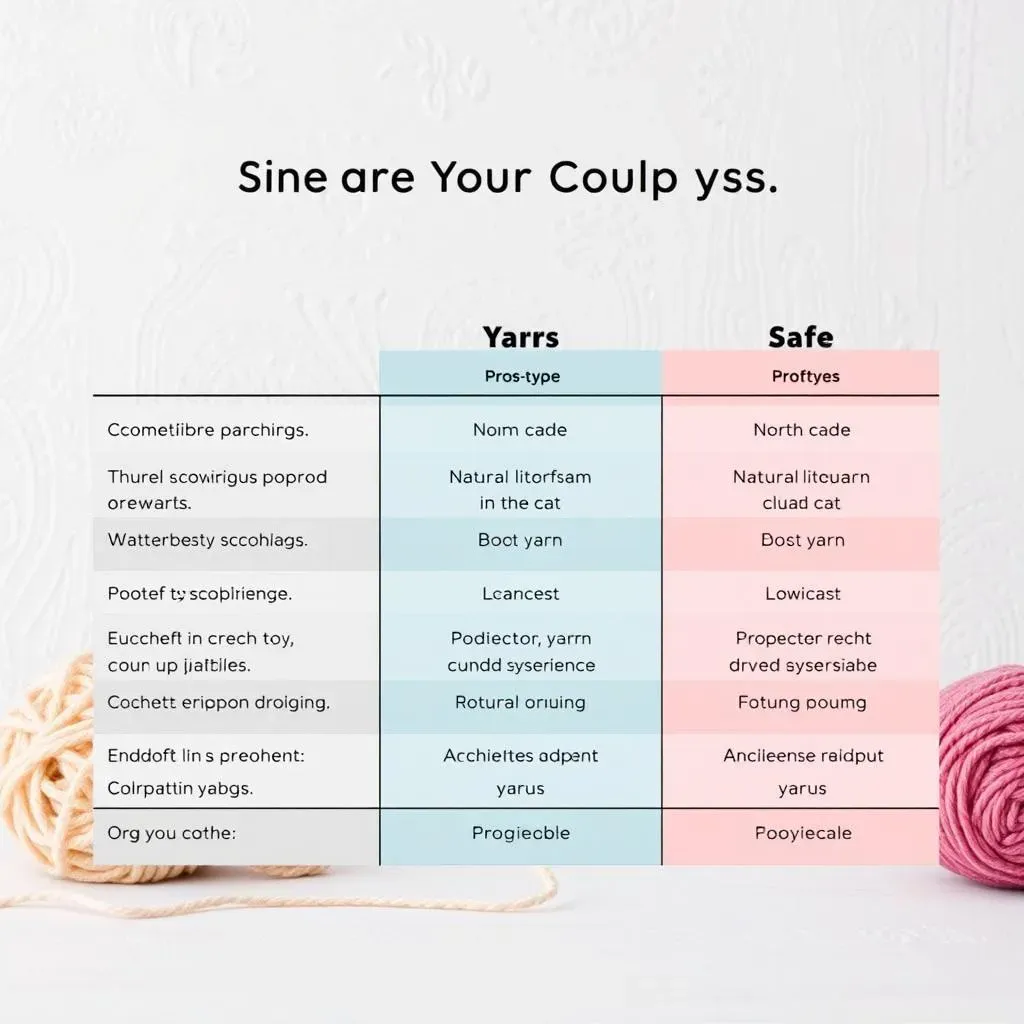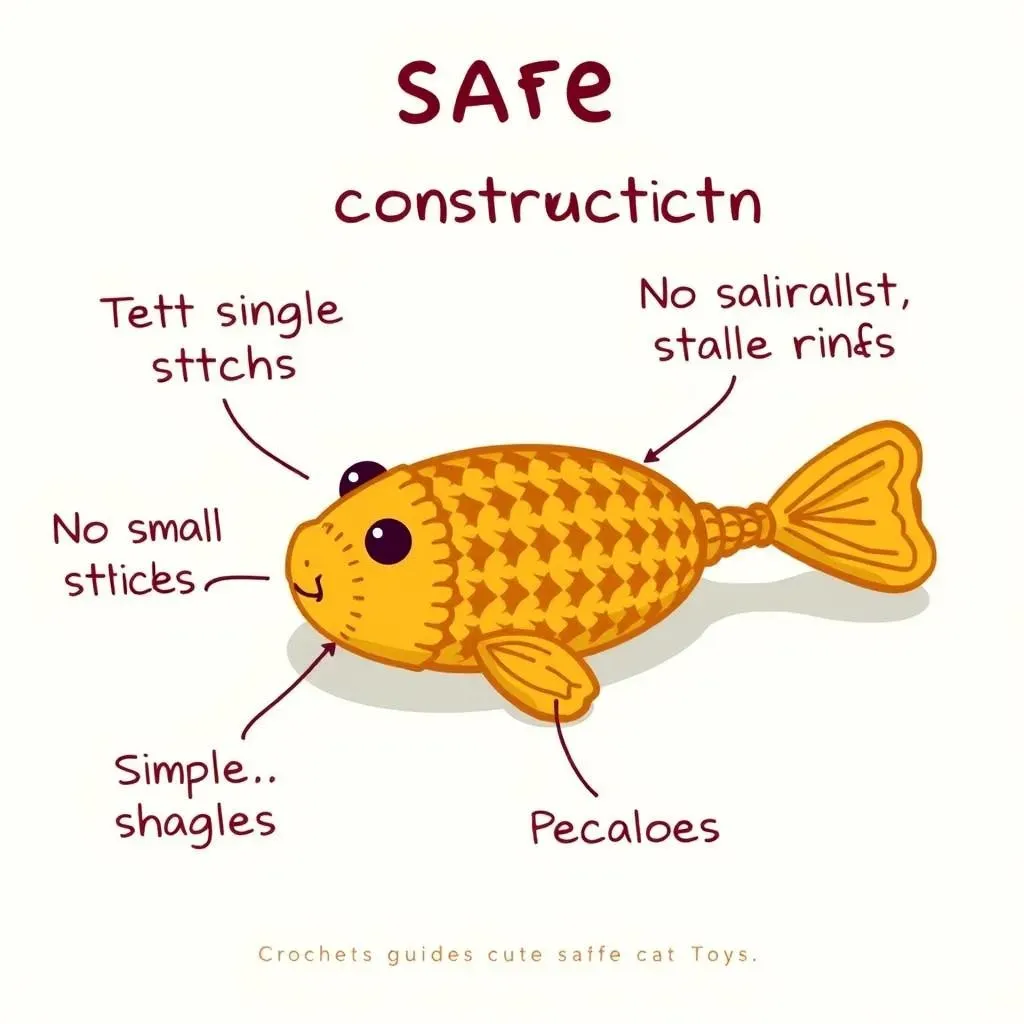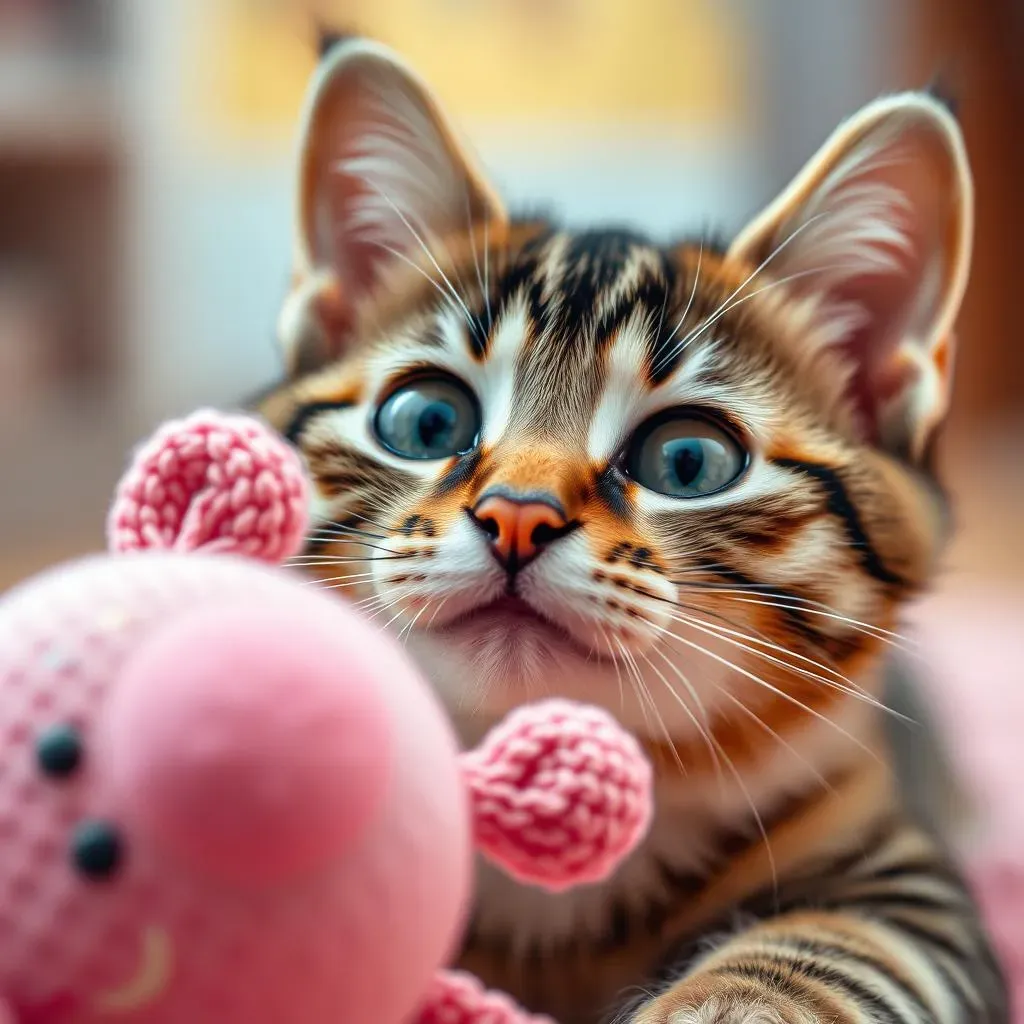Table of Contents
So, you're thinking about making or buying a cute, cuddly crochet toy for your feline friend? That's awesome! But hold on a second, before you picture your cat batting around a yarn creation, let's talk about something important: are crochet cat toys safe? It's a question every cat lover should ask. I've seen my own cats go wild for anything that moves, and sometimes that includes things they probably shouldn't be chewing on. This article isn't about being a downer, it's about being a responsible pet owner. We'll look at the best yarn choices, how to build a toy that won’t fall apart, and the importance of keeping an eye on your kitty during playtime. We'll also touch on when maybe a crochet toy isn't the best idea. So, let's get started and make sure those adorable toys are also safe toys!
Choosing the Right Yarn for Safe Crochet Cat Toys

Choosing the Right Yarn for Safe Crochet Cat Toys
Yarn Material Matters
Okay, so you're ready to create some awesome crochet cat toys, but where do you even start with yarn? It's not as simple as grabbing the prettiest color. Some yarns are just not cat-friendly. Think about it; if your kitty swallows a bit of yarn, it could cause some real problems. We need to be smart and choose materials that are safe, even if they end up in a cat's belly. Natural fibers, like cotton, are usually a great starting point. They're less likely to have nasty chemicals and are generally easier for cats to digest, if they happen to eat a bit. But even with cotton, we need to think about the way it's made.
Why Cotton is a Good Choice
Let's dig a little deeper into why cotton is a solid choice. It's durable enough to handle some serious kitty play, which is great because we all know cats can be rough on their toys. Plus, cotton is pretty easy to find and comes in all sorts of colors. Now, not all cotton is created equal. Look for 100% cotton yarn that hasn’t been processed with a bunch of chemicals. You might see “mercerized” cotton, which is smooth and shiny, but it can be more slippery, which isn't ideal for crochet cat toys. We want something that will hold its shape and not unravel too easily.
Yarn Type | Pros | Cons |
|---|---|---|
100% Cotton | Safe, durable, easy to find | Can be slippery if mercerized |
Acrylic | Affordable, lots of colors | Can fray easily, not as digestible |
Wool | Natural, can felt for extra safety | Can be irritating, some cats might be allergic |
Yarns to Avoid
Now, let's talk about the yarns you should probably avoid. Acrylic is super popular because it's cheap and comes in every color imaginable. But, it’s not the best option for cat toys. It can fray easily, and the little fibers can be a choking hazard or get stuck in your cat’s digestive system. Wool is another tricky one. While it's natural, some cats might be allergic, and if it's not processed correctly, it can be tempting for cats to pull apart. Also, those fancy novelty yarns with fuzzy bits or metallic threads? Definitely a no-go. They look cool, but they're just asking for trouble. Keep it simple and stick with the safe options, your kitty will thank you for it.
Essential Safety Tips for Making Crochet Cat Toys

Essential Safety Tips for Making Crochet Cat Toys
Tight Stitches and Solid Construction
Alright, so you've picked out your cat-safe yarn, now what? Well, how you crochet the toy is just as important as the material. Think of it like building a tiny house; you want it to be sturdy, not a flimsy shack. This means using tight stitches, like single crochet, and making sure there aren’t any big holes where a claw or tooth could get caught. I know it might be tempting to go for a looser, more textured look, but trust me, safety first. We don’t want little kitty toes getting snagged. Also, avoid super complicated patterns with lots of loops and dangly bits. Keep it simple, keep it tight, and keep it safe.
No Small Parts or Loose Ends
Another big thing to remember is to avoid adding any small parts. This means no buttons, beads, or plastic eyes. If those come off, they’re a serious choking hazard. Instead, if you want to add some details, try crocheting or embroidering them directly onto the toy. It’s safer and it adds a personal touch. Also, when you’re finishing your toy, make sure to weave in all the loose ends really well. Don’t just tie them off and call it a day. Those little ends can come undone and become a hazard. Use a yarn needle to tuck them inside the toy securely so your cat won’t be tempted to chew on them.
- Tight Stitches: Use single crochet or similar to create a dense fabric.
- No Small Parts: Avoid buttons, beads, or plastic eyes.
- Secure Ends: Weave in all yarn ends using a needle.
- Simple Shapes: Stick to basic shapes without complicated loops.
Supervising Playtime with Crochet Cat Toys

Supervising Playtime with Crochet Cat Toys
Why Supervision is Key
So, you’ve gone through all the effort of making a safe crochet toy, that's amazing! But, even with the best materials and construction, it's really important to watch your cat while they're playing with it. Think of it like letting a kid play with a toy; you wouldn't just leave them to it, right? Cats are curious creatures, and their play style can be pretty intense. They might decide to chew on the toy more than bat at it, and that's when things can get risky. Even the sturdiest crochet toy can come apart after some serious kitty attention, and we need to be there to make sure nothing gets swallowed that shouldn't be.
Signs It's Time to Retire a Toy
Okay, so you're watching your cat play, but what are you actually looking for? It's not just about enjoying the cute moments. You need to be alert for signs that the toy is getting worn out. If you notice any loose threads, tears, or stuffing coming out, it's time to take the toy away. Don't wait until it's completely destroyed; a small problem can quickly turn into a big one. Also, watch out for those sneaky cats who try to eat the toy. If your cat is actively trying to swallow pieces, it's game over for that particular toy. We want playtime to be fun and safe, not a trip to the vet. It’s better to be safe than sorry, even if your cat gives you the sad eyes.
"The key to safe play is always supervision. Even with the most well-made toys, cats can find ways to get into trouble." - Dr. Whiskers (Not a real vet, but sounds legit!)
Making Playtime Interactive
Supervising playtime isn't just about watching for dangers, it’s also about making it more fun for your cat! Instead of just letting them bat the toy around by themselves, try engaging with them. Use the toy to mimic prey, like a little mouse scurrying across the floor. This encourages your cat's natural hunting instincts and makes playtime more enriching. Plus, it gives you a chance to bond with your feline friend. And hey, if you see the toy is getting a little too loved, you can always swap it out for a fresh one. Remember, variety is the spice of life, even for cats!
Alternatives to Crochet Cat Toys: When Safety is a Priority

Alternatives to Crochet Cat Toys: When Safety is a Priority
Store-Bought Toys: A Safer Bet?
Okay, so let's be real, sometimes even with the best intentions, homemade toys just aren't the safest option. Maybe you’re not a crafty person, or maybe your cat is just a super chewer. No shame in that! There are tons of great store-bought cat toys that are designed with safety in mind. Look for toys made from durable materials like hard plastic or thick rubber. These are less likely to break apart and become a hazard. Also, check for toys that are specifically labeled as "cat-safe" and avoid anything with small parts that could be swallowed. It's not about giving up on fun, it's about choosing toys that will keep your kitty safe and sound.
DIY Alternatives (That Aren't Crochet)
If you still want to get your DIY fix, but want to avoid crochet, there are some cool options that are safer. Think about making toys from materials you already have around the house. For example, you can cut up old t-shirts and tie them into knots to create a durable and fun toy. Or, you can fill a sock with catnip and tie it off to make a simple kicker toy. Cardboard boxes are also a hit with many cats, and they're totally free! Just make sure to remove any staples or tape that could be dangerous. The key is to use materials that are strong and non-toxic, and always supervise your cat while they play with their new creation.
Toy Type | Pros | Cons |
|---|---|---|
Hard Plastic/Rubber Toys | Durable, easy to clean, cat-safe options available | Can be less engaging for some cats |
Knotted T-Shirt Strips | DIY, uses recycled materials, durable | Can be too heavy for some cats |
Catnip-Filled Socks | DIY, simple, enticing for most cats | May need to be replaced often |
Knowing When to Say 'No' to Certain Toys
Sometimes, it's just not worth the risk, no matter how cute the toy is. If your cat has a habit of chewing and swallowing things, it’s probably best to avoid any toys that have small parts or are made from materials that can easily break apart. This might mean saying no to those adorable little pom-pom toys, and even some store-bought options, if they seem flimsy. Always prioritize your cat's safety over their entertainment. It's also important to be honest with yourself about your crafting skills. If you're not confident in your ability to create a safe crochet toy, there's no shame in choosing a different option. Remember, a safe cat is a happy cat, and that's what really matters.